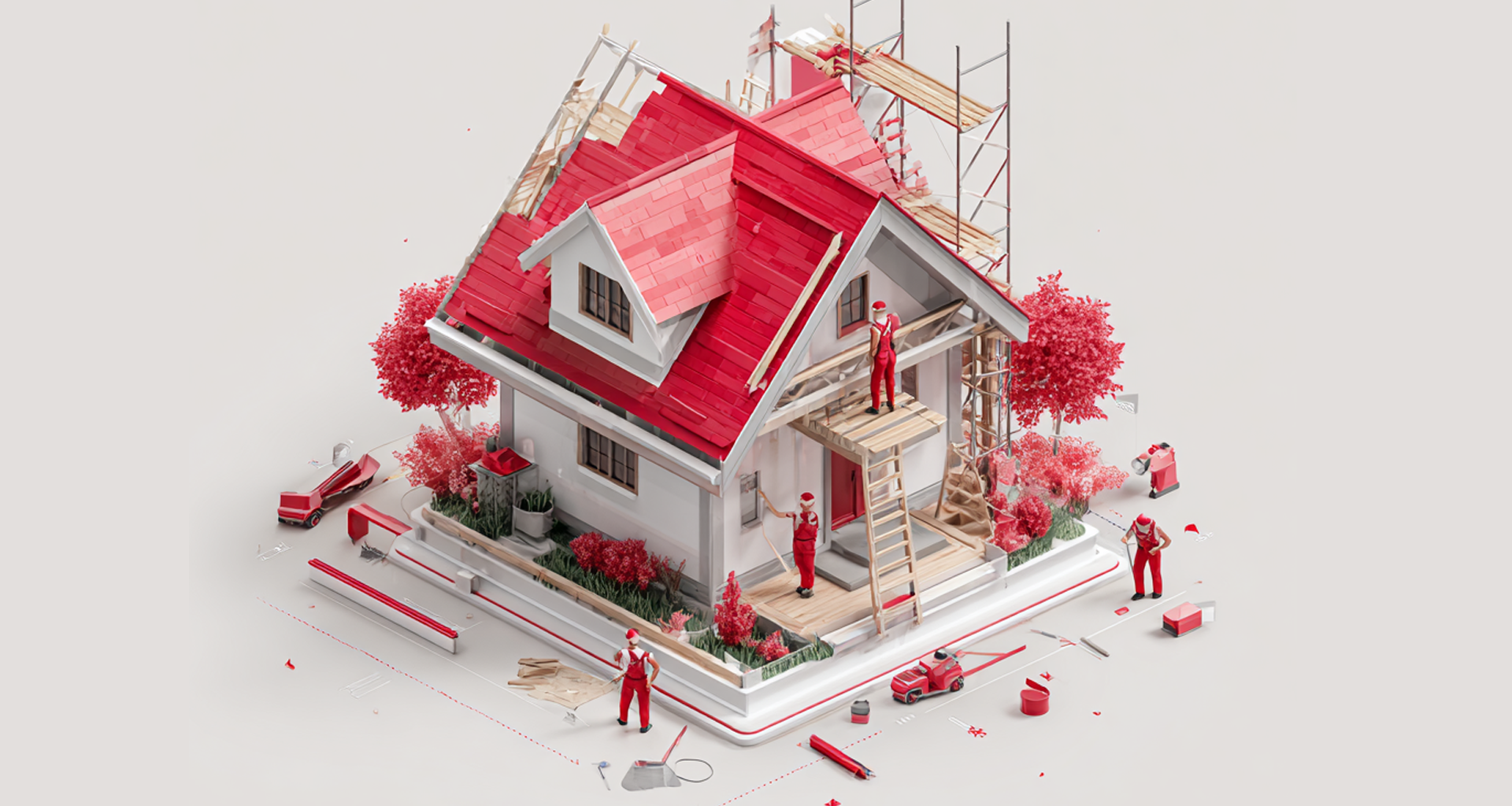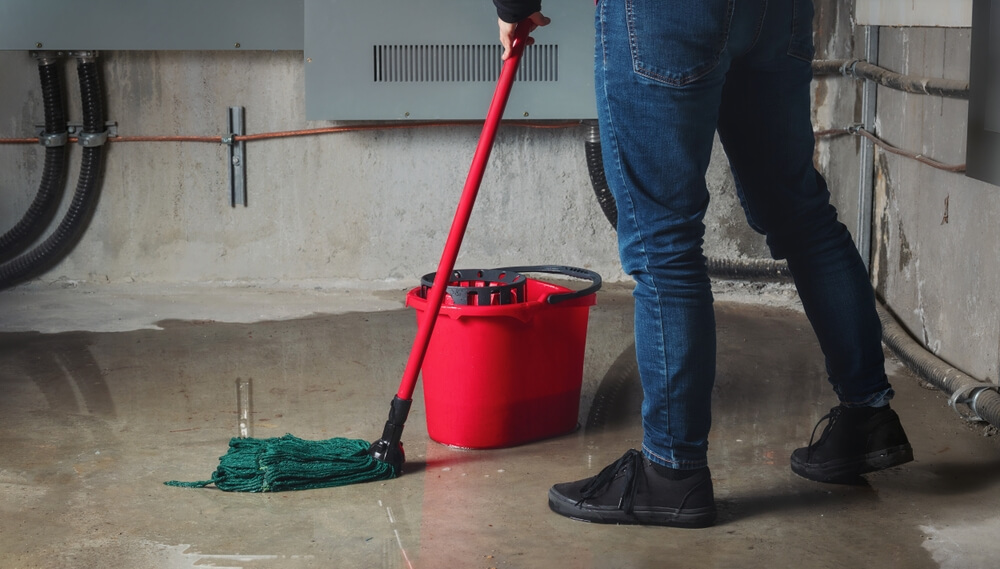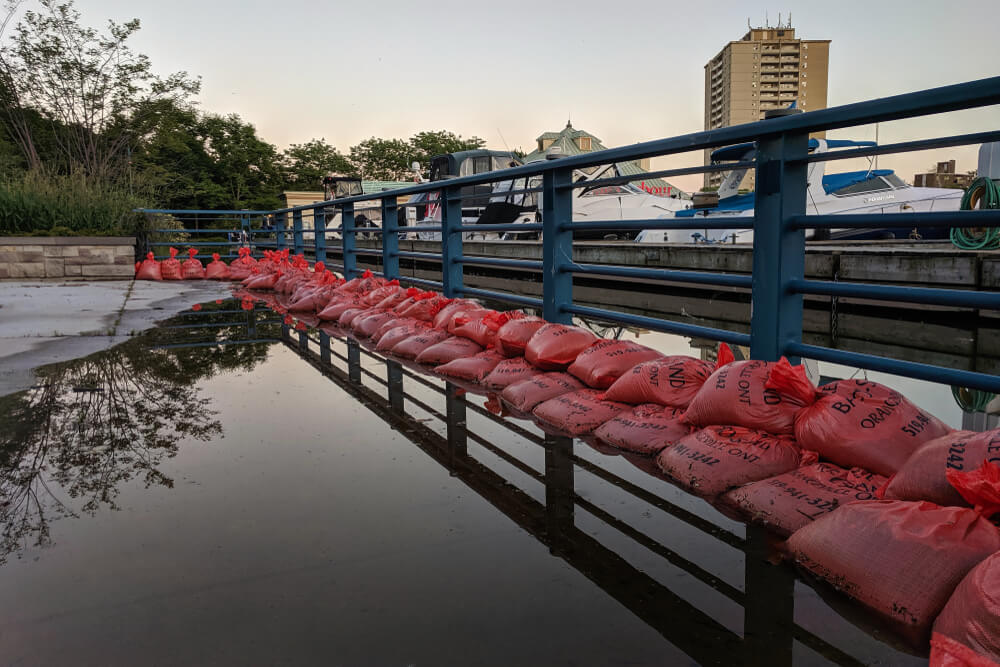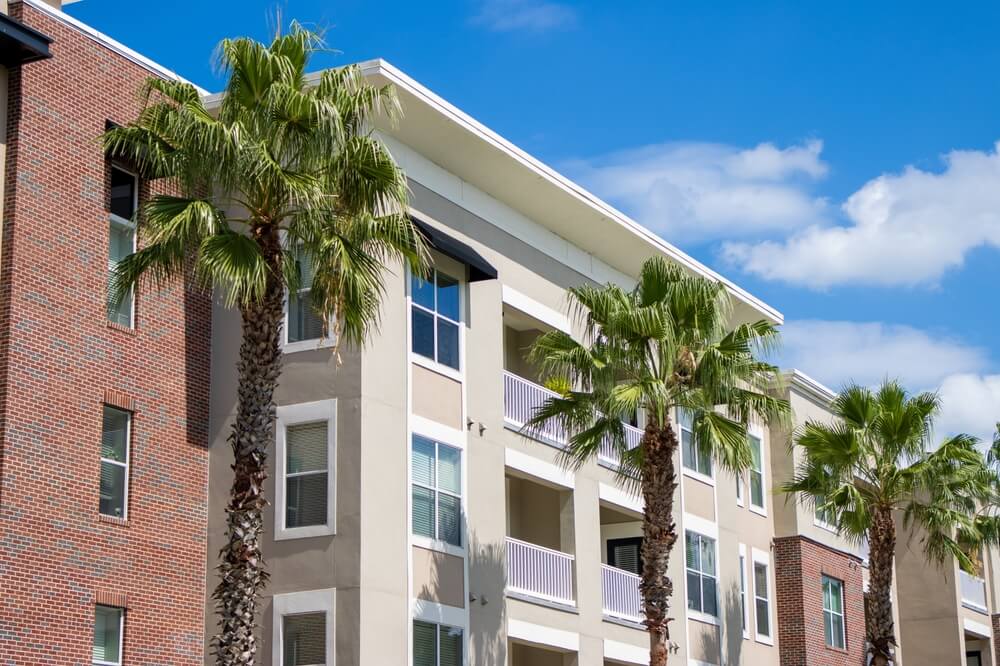
If you are not redirected within 30 seconds, please click here to continue.
Samedi: 10h – 16h HAE

If you are not redirected within 30 seconds, please click here to continue.
If you are not redirected within 30 seconds, please click here to continue.
Steps to File an Insurance Claim After Hurricane Dorian

Table of Contents
Hurricane Dorian left a path of destruction in its wake. Because the storm moved so slowly, it left more damage from high winds and heavy rain. Now that the storm has passed, it’s time for Canadians to start assessing property damages caused by the hurricane so they can file their claims right away. Filing a claim for hurricane damage should be started promptly but new homeowners or those that have never filed a claim might not understand why.
Why It’s Important to File a Claim Now
When a hurricane occurs, there may be hundreds of people filing claims at the same time. The longer a person waits to file a claim, the further behind they’ll be in line with other homeowners who also need help. But, there’s another important reason to file a claim right away.
Damage from a hurricane or other severe weather-related incident needs to be reported promptly so you can start making temporary repairs to lessen any subsequent damage. Homeowners are responsible for making any repairs that mitigate the risks of further damage to their home and/or property, preventing further damage so the claim isn’t denied
Let's say Hurricane Dorian caused a hole in your roof. You need to file the claim right away and then make a temporary repair like putting a tarp over the hole to block any subsequent rain. This will prevent further damage until permanent repairs can be completed.
Why is this step important? Your insurance provider can deny future claims for things like mold and/or rotting wood if you didn’t take initial steps to reduce further damage.
Filing a Claim Promptly and Cleaning Up Damages to Avoid Injuries
Let’s say Hurricane Dorian caused broken windows and a tree fell over. You are responsible for purchasing plywood and boarding up windows to reduce further damage from rain or looters. You are also responsible for having the tree removed. It is up to you to promptly clean up and make repairs to prevent further damage and injuries. You should catalogue and keep receipts for any costs you incur.
With the time delay in filing the claim, the insurer will know how many other residents in that same area filed claims and which did not. They might question why you waited to file a claim, and this can lead to a much lower damage payout or an outright claim denial if too much time passes. With the tree cleanup, the insurer may deny a personal injury claim because you didn’t take reasonable steps to reduce personal injuries.
What’s Covered by Insurance?
Hurricane Dorian left homeowners with a lot of wind-related damage. This is covered by most home insurance policies. But, how will the homeowner know what's covered and what's not covered?
What is usually covered by home insurance?
- Trees that fell onto the property
- A roof that blew off and rainwater damaged personal property
- Broken windows and personal property damage from flying debris
- Food spoiled by a power outage
What’s not covered or might require an extension/rider
- A basement filled with rainwater from a broken window (the homeowner may need to have overland flood coverage or an extension to cover runoff damage)
- A basement filled with water from pipes or drains (the homeowner may need sewer back-up coverage)
What is usually covered by auto insurance?
- Trees that fell onto a vehicle
- Vehicles that were flooded out
- Windows that were broken in a vehicle by trees, branches, or debris
Note that personal property that was damaged in your vehicle is covered by your home insurance policy, not your auto policy.
Steps to Take After a Hurricane Occurs: How to File a Claim
1. Assess all the damages immediately after the hurricane.
Take videos and pictures, document all damage and don’t throw away any damaged items until the insurance adjuster has seen all the damaged property. Include any damage from power outages, spoiled food, and receipts for supplies to start the cleanup.
2. Itemize all damages and file the insurance claim right away to report general damages. Call the insurance company’s emergency number right away to report serious property damages.
You should file claims right away and directly after assessing damages to their property. Don’t wait because the line may be long and it can take insurance adjusters longer to get to you. However, once the assessor is available, make sure you take your time to do a thorough damage assessment.
To itemize damages, walk through the property and inspect it. Make a list of all the damages and take photos and video. Don’t throw anything out until the insurance adjuster has viewed the damage. If the homeowner has “before” pictures or video of the items, give this to the adjuster as proof of the damage caused by the hurricane. Having a prepared list helps the adjuster know the damages that need repairs. They can file the verified claim and the homeowner can get the money to start their repairs.
Look for damages that might include:
- Flooding damage
- Mould from rainwater damage or flooding
- Roof damage like holes, broken shingles, leaks or damaged gutters
- Vehicle damage from fallen trees, branches or other debris
- Windows that are broken or ripped from their frames
Major and Minor Claim Damage
Claim damages might be minor or major but both should be reported promptly.
Here’s the difference:
Filing damage claims for minor property damage
If the damage isn’t serious, call the insurer right away to start a claim. Calls should be made promptly because there will be others with claims to file. What happens if the homeowner waits?
If the homeowner waits, it might take days or weeks before an insurance adjuster can help them. Insurance agents will take the most serious damage claim requests first. For example, a person with no roof will take precedence over someone with a few missing shingles and broken windows.
Filing damage claims to report major property damage
If a homeowner doesn’t have an emergency number for their insurer, they can contact the Insurance Bureau of Canada (IBC) at (844) 227-5422, ext. 228. If there’s a power outage and calls won’t go through, try back the next day. The homeowner won’t be penalized if they can’t file their claim right away due to the inability to reach the IBC.
3. Start making temporary repairs and contact reputable contractors to get bid requests for permanent repairs. Look for ways to reduce personal injury risks on the property.
These steps are important to ensure all damage claims are paid:
Temporary Repairs
The homeowner is responsible for ensuring no further damage occurs until permanent repairs can be made. Temporary repairs might include:
- Boarding up windows and doors
- Adding tarps to a roof
- Drying out any wet items to prevent mold
Reducing Hazards
The homeowner should also look for ways to reduce hazards on and in the property:
- Remove any unsafe electrical wiring
- Fix any protruding nails or falling debris
- Remove any hazardous materials or chemicals
- Block off any unsafe areas that might be a fall risk
4. Receive confirmation from the insurance adjuster that they will visit the property, assess the damages and pay the claim.
This step might take a bit longer depending on how busy the insurance company is with other claims. Once the adjuster contacts you, they will schedule a date to visit the property and assess the damages.
You should not throw out any damaged property until the adjuster has seen it. Use this time to start calling around to reputable contractors to get repair estimates. That way, once the claim adjuster schedules the appointment and views the property, they can prepare to pay the claim.
5. Accept the damage claim amount or appeal it.
The insurance company will present you with a payout based on the value of their damage assessment. You can accept the claim settlement or file an appeal. In some cases, you might want to start an appeal if the claim money is less than the initially requested amount. You can always reach out to the IBC with any questions or concerns.
If you don't want to accept the claim amount, there are a few things you can do:
- Talk to your insurer if they think their settlement amount isn’t fair.
- Most insurance companies have an ombudsperson who can help you resolve a settlement dispute.
- Talk to a lawyer or public adjuster.
- Talk to an insurance regulator if you want to file a complaint or express concerns.
If you do accept the claim amount before you start making repairs, it’s important to do two things:
- Work only with fully licensed and reputable contractors. This helps to avoid fraudulent contractors looking for a fast payout. Most insurance companies have preferred contractors that they can refer you to.
- Consider aesthetic improvements when making repairs which are covered in the next section.
Paying the Deductible
You are responsible for paying the deductible amount, i.e., $250, $500 or $1,000. The insurance company will pay the balance of the approved claim. For example, if the claimed damage totals $5,000 and a homeowner's deductible is $1,000, the insurance company will pay $4,000 and the homeowner will pay the remaining $1,000 out-of-pocket towards the claim damages to meet their deductible. Homeowners that don't have the deductible money up-front might want to consider putting the amount on a credit card to avoid delaying necessary home repairs.
Consider Making Improvements
After a hurricane, home repairs can become home improvements. When making repairs, you might find ways to reduce energy consumption and increase the home’s value that can be incorporated with your repairs. Your insurance company might allow you to pay extra to include at the time of repair.
Ideas might include:
- Replacing damaged air-conditioning systems with more economical units that are a similar cost
- Replacing an old skylight with an insulated wall panel
- Adding a septic, soft water and/or filtration system
- Adding insulation to walls, the attic, floors, pipes, and ductwork
- Adding new flooring and/or carpeting
- Adding new ductwork, a filtration system, humidifier and/or central air/heat
- Adding storm windows and doors, a new roof and security system
- Installing energy-efficient and/or built-in appliances
- Raising your property if it’s in a flood zone area
- Installing window films that can add insulation from hot and cold weather
Steps to Help Homeowners After a Hurricane
A few steps can help you after a hurricane and to prepare for any subsequent weather.
These include:
After a hurricane
- Save all damaged personal belongings until your insurance adjuster visits
- Keep track of repairs and save all receipts for insurance reimbursement
- Get all bids in writing and only from licensed contractors
- Keep records of all the names, dates and times you spoke to insurance representatives and contractors
- Note the names and license information of all contractors and repairmen on the property
- Save all hotel and food receipts if staying elsewhere while the repairs are made for insurance reimbursement
To prepare for subsequent severe weather conditions
- Consider purchasing debris removal coverage as a rider
- Move heavy items from higher shelves to lower shelves in the home
- Purchase shelving brackets or braces to prevent them from falling over
- Make all necessary roof repairs
- Move electronics to higher floors if flooding is a risk in the basement
- Seal all photo albums and important documents in waterproof bags or store them securely in the cloud online with a copy of the insurance policy
- Inventory all property with the use of photos, videos, and serial numbers for all electronics
Protect Your Property with the Best Home Insurance
Hurricane Dorian left a lot of damage behind. However, homeowners that report damage claims promptly will have all the help they need from their insurers. Inspect the property and file a claim right away. Then make the necessary temporary repairs and accept bids from reputable contractors for permanent ones. To compare insurance rates, contact Rates.ca.
With Rates.ca, you can compare insurance quotes from Canada’s leading providers (and start the rebuilding process).
Get money-saving tips in your inbox.
Stay on top of personal finance tips from our money experts!










